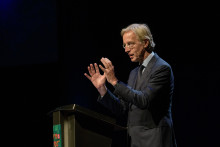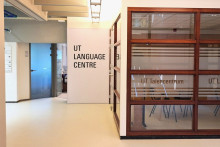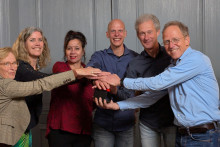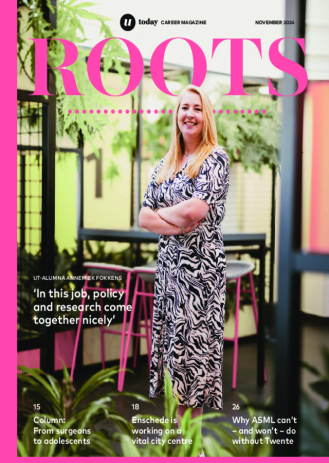 |
| Adeeb Hakim. Photo: Gijs van Ouwerkerk |
Favorite sport team: FC Barcelona
Dream destinations: China and Egypt
Sci-fi film: The Matrix
Favorite food: `Just about anything as long as it's not spicy.'
What do you miss most about Canada: `The wild colors of the maple trees.'
Best part about living in the Netherlands: `There are lots of blondes!'
According to Hakim, up to 15 percent of patients fall into this category. He explains, `Pain is a kind of alarm that warns the body of an actual or potential damage, and it is a fundamental sensation that is critical for survival. Most of the time pain is temporary, and often this occurs when the warning or damage is done, and there is no more pain. We refer to it as acute pain.'
Haskim says, `Chronification or persistent pain is when the danger is gone, but the pain is still there due to the complex interactions going haywire for unknown reasons.' He offered one example, `When a patient has surgery, and they are given general anesthesia, they are not aware of the pain, but the fact is that all the cells in the body have memory. During the incision, surgeons are bombarding the body with pain. The pain exists, you don't feel it, yet the cells will remember it, and as a result the pain system in 15% of patients will change.'
Many times doctors will try to find pre-emptive measures to stop chronification with special treatments, such as, using ketamine. However, according to Hakim, doctors can think of treatment only if they know what went wrong in the pain system. Neuroscientists can often help doctors by telling them exactly how the complex pain network functions by providing them with the tools to measure changes in the pain system.
The system that Hakim is working on is called Ambustim. It involves the application of electrical stimulation on the skin of the patient and the corresponding measurement of the response by using electroencephalography, otherwise known as EEG. `Pain is very subjective,' says Hakim. `Doctors are dependant on a patient's response. I objectively quantify the measurement of pain. If we can identify which patients are prone to chronification before surgery, measures can be taken to prevent it.' The goal of Hakim's research is to optimize the Ambustim system and develop it for improved use in medical environments.
As a confessed lover of science fiction, Hakim believes that fantasy leads science into the realms of the unknown. `Fantasy,' he says, `always gets there first.' Although Isaac Asimov is Hakim's favorite author, he doesn't have much time to read these days. Not surprising, since he plays football for two teams, enjoys dancing the Salsa and Cumbia with his Mexican and Spanish co-students and has been sailing twice in the scenic province of Friesland.
Socially, Hakim does not want to be bound by certain lines which one culture imposes on him. `I want to explore everything. I want to push the last boundaries, be it in science, or ethics, be it in culture, everything. I want to make lots of friends, meet people from different parts of the world. That's my philosophy, be open to everything and push the boundaries.'
Hakim was born in Kabul, Afghanistan and immigrated to Canada with his family when he was two-years-old. He studied electronics engineering at DeVry University in Phoenix Arizona and Toronto before moving to Denmark in July of 2004 to immerse himself in a culture where the people were `soft and gentle,' and the landscape was`lush and green.' He received his master's degree in biomedical engineering from the Aalborg University in the north of Denmark before taking a position as an assistant scientist in biomedical research in Sønderborg in the south.
In the summer of 2007, he joined the department of Biomedical Signal and Systems at the UT to work towards his doctorate under professor Peter Veltink and Dr. Jan Buitenweg. Once he has completed his PhD, Hakim plans to start a company in the Netherlands to further his research in the medical world. `I want to spend quality time in Europe, and after two years, I want to have my own private plane, and a pilot's license!'







